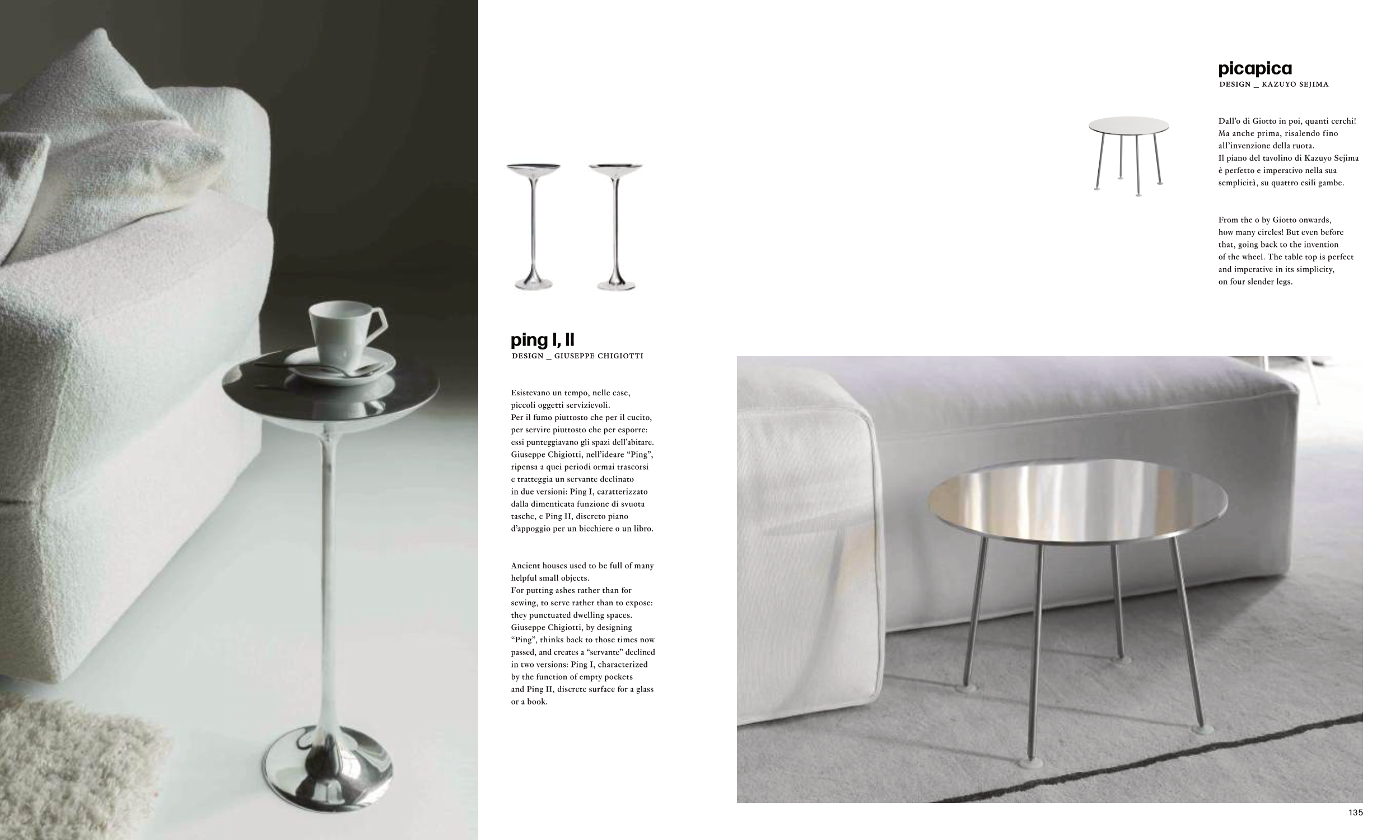134
135
ping I, II
picapica
design _ giuseppe chigiotti
design _ kazuyo sejima
Esistevano un tempo, nelle case,
piccoli oggetti servizievoli.
Per il fumo piuttosto che per il cucito,
per servire piuttosto che per esporre:
essi punteggiavano gli spazi dell’abitare.
Giuseppe Chigiotti, nell’ideare “Ping”,
ripensa a quei periodi ormai trascorsi
e tratteggia un servante declinato
in due versioni: Ping I, caratterizzato
dalla dimenticata funzione di svuota
tasche, e Ping II, discreto piano
d’appoggio per un bicchiere o un libro.
Ancient houses used to be full of many
helpful small objects.
For putting ashes rather than for
sewing, to serve rather than to expose:
they punctuated dwelling spaces.
Giuseppe Chigiotti, by designing
“Ping”, thinks back to those times now
passed, and creates a “servante” declined
in two versions: Ping I, characterized
by the function of empty pockets
and Ping II, discrete surface for a glass
or a book.
Dall’o di Giotto in poi, quanti cerchi!
Ma anche prima, risalendo fino
all’invenzione della ruota.
Il piano del tavolino di Kazuyo Sejima
è perfetto e imperativo nella sua
semplicità, su quattro esili gambe.
From the o by Giotto onwards,
how many circles! But even before
that, going back to the invention
of the wheel. The table top is perfect
and imperative in its simplicity,
on four slender legs.


